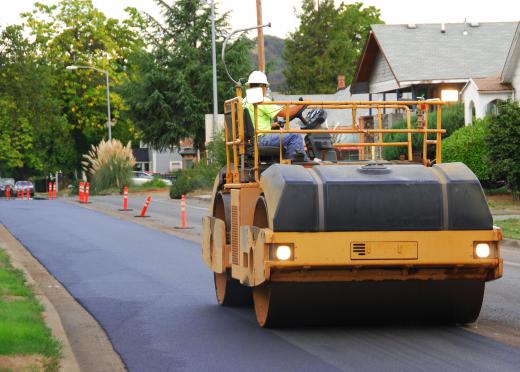Flexible pavement is created from a mixture of materials that are pressed or glued together to give them their strength. Paved roads are typically either flexible or rigid depending on the conditions of the road and the area around it. To understand a flexible pavement, it's important to understand how pavement works.
When a road needs to be paved, it must be tested first to see what type of materials will work the best. The surrounding area and environment is examined to determine how strong or weak the ground is, how likely it is to wash away during rain, and how it will react to the pressure of traffic. The amount of traffic on the road is considered as well. A road with little traffic doesn't need to be reinforced as much as a road with high levels of traffic.

Next, a pavement type is decided on. Pavement has a top layer which the cars drive over and a base layer that supports the top layer and protects it from wearing down. An additional layer may be added between the two for more strength and protection. The top layer is either rigid or flexible.
To create a flexible pavement, small stone pieces are crushed up and either pressed together or mixed with a glue-like material known as bitumen. The bitumen is heated to about 300 degrees Fahrenheit (150 degrees Celsius) before the stone is added. Machines then lay the mixture onto the road, creating the pavement the cars drive on.

A rigid pavement, on the other hand, has a base layer laid down and then a concrete slab is added over the top. The materials may be altered slightly for more stability depending on the area and road conditions. Cracking is a common problem with concrete, especially in areas of higher traffic.
The flexible pavement has the advantage of being fairly quiet when driven on and reflecting back light at night. The material content can be adjusted to account for different traffic and weather patterns in different regions. The road is examined first before rigid or flexible pavement is decided on. An engineer determines how often the road is used, how much water comes into contact with the road, how often repairs would need to be made in the future, and the budget assumed to him. He then determines the type of pavement that gives the best performance for the amount of money spent.
